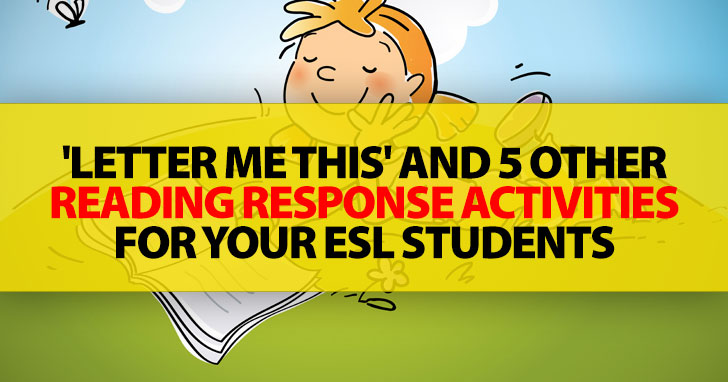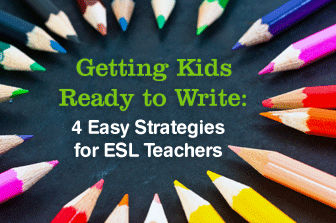'Letter Me This' And 5 Other Reading Response Activities For Your ESL Students


No one is more susceptible to this fear of the blank page than kids. That is why stressing writing as a process is so important with young students. A big part of the writing process is getting kids thinking about what they will write, or prewriting, before we ask them to put words on the blank page. Following are some ideas you can use to get your kids’ heads in the right place before they set their pencils to that empty page.

Something as simple as folding a piece of paper into three columns can be enough to motivate your kids to get their ideas on the paper. Ask each person to divide his paper into three sections, either by folding or by drawing lines down the page and then label those columns beginning, middle and end. Then, as your students are thinking about a story that they might write, have them make notes on something that could happen at the beginning of the story, in the middle of the story, and at the end of the story. By getting some possibilities down on paper before writing the story, your students will have an easier time moving the story forward and will ensure a solid plot which clearly has a beginning, middle and end, an achievement that does not always come easy for children.
Before setting your students to some research and then a report on any given subject, have them start with a KWL chart. Like the previous activity, your students should begin by dividing their papers into three sections, but this activity is designed for nonfiction writing, not fiction. Therefore, rather than labeling the columns as sections of a story, your students should label the sections what I know, what I want to know, and what I learned. They can then spend a few minutes filling out the first column with facts and information they already know about the subject they are researching. Then have your students ask themselves some questions about the topic they are going to research. What do they want to know? Have them make some notes in the second column. Now it is time to do the research. As your kids read, have them take notes in the third column, writing down information as they discover it. When it is time to write the report, have your students use the information on the paper as an outline for what they will say about their research.
Whether your students are getting ready to write a fiction or nonfiction piece, you can use the daily report to help them generate ideas before they tackle writing the entire piece. Start with a review of the question words in English: who, what, where, when, why and how. Then, ask questions or have your students ask questions that begin with each of these words. For example, for a fictional piece you might ask, “Who appears in the story?” For a nonfiction piece ask, “Who was on the scene of the event?” After everyone has some answers to who question, move on to what questions. Working through the question words one at a time is similar to how a reporter writes an article. You may want to put your students into small groups or do this activity as a class, but make sure each person is writing about their own topic on their own sheet even if the whole class is coming up with the questions together. Once everyone has answered at least one question beginning with each word, ask students to go back and read what they have written. They can use these basic facts to outline the final piece and then go through the process of writing it.
Your students can generate ideas for a nonfiction paragraph with a simple star organizer. Have your students draw a large, five pointed star on one side of a piece of paper. If you have already talked about topic sentences, ask each person to write the topic sentence for their paragraph in the center of the star. If you have not talked about topic sentences, this is the time to do it. You could also have your students simply write the topic of the paragraph in the middle of the star. Each of the arms of the star is for the details that will support the main idea. Challenge your students to write one sentence in each of the arms. Once those sentences are written, the paragraphs are practically finished. Show your students how to start a paragraph by indenting and then copying the six sentences that are inside the star. Finish the paragraph with a concluding sentence and the writing assignment is complete.
During these activities, make sure your class does not fret over grammar or spelling mistakes as these notes are purely for their own use. The final draft is when they should be careful about spelling and grammar. Getting your kids ready before they write does more than take away the fear of the blank page. It improves the quality of their writing and makes the words come more easily. If you have fun with these writing readiness ideas, your students will, too, and that is something every teacher should want!
What do you do to get kids ready to write? Share your great ideas with us and the rest of Busy Teacher’s readers.